Understanding the Importance of a PCB Testing Board
A PCB testing board, also known as a test fixture or a test jig, is a specialized Circuit board designed to facilitate the testing and programming of other PCBs. Its main purpose is to provide a consistent and controlled environment for testing the functionality, performance, and reliability of the target PCB.
By using a well-designed PCB testing board, you can:
- Reduce testing time and effort
- Improve testing accuracy and consistency
- Identify and isolate faults more easily
- Minimize the risk of damage to the target PCB during testing
- Streamline the programming process for production units
Tip 1: Define Your Testing Requirements
Before starting the design process, clearly define your testing requirements. Consider the following factors:
- Types of tests to be performed (e.g., functional, boundary scan, in-circuit, etc.)
- Number and types of devices to be tested
- Required test coverage and accuracy
- Testing speed and throughput
- Compatibility with existing testing equipment and software
By having a clear understanding of your testing needs, you can make informed decisions throughout the design process and ensure that your PCB testing board meets your specific requirements.
Tip 2: Choose the Right Connectors
Selecting the appropriate connectors is crucial for ensuring reliable and consistent connections between the PCB testing board and the target PCB. Consider the following factors when choosing connectors:
- Pitch and spacing compatibility with the target PCB
- Current and voltage ratings
- Mechanical durability and cycle life
- Ease of use and maintenance
- Cost and availability
Some common connector types used in PCB testing boards include:
| Connector Type | Description |
|---|---|
| Pogo Pins | Spring-loaded contacts that provide temporary connections |
| Edge Connectors | Connectors that mate with the edge of the target PCB |
| ZIF Sockets | Zero insertion force sockets for easy device insertion and removal |
| Bed-of-Nails | An array of spring-loaded pins that contact test points on the target PCB |

Tip 3: Implement Proper Grounding and Shielding
Proper grounding and shielding are essential for minimizing noise, interference, and signal integrity issues during testing. Follow these guidelines:
- Provide a low-impedance ground path between the testing board and the target PCB
- Use ground planes and grids to create a stable reference voltage
- Implement shielding for sensitive signals and components
- Use decoupling capacitors to reduce power supply noise
- Follow best practices for PCB layout and routing to minimize crosstalk and EMI
Tip 4: Plan for Testability
Design your PCB testing board with testability in mind. This involves incorporating features and design techniques that facilitate testing and debugging, such as:
- Test points and probe access
- Boundary scan chain for testing complex digital circuits
- JTAG interface for programming and debugging
- Built-in self-test (BIST) capabilities
- Diagnostic LEDs and indicators
- Modular design for easy maintenance and upgrades
Tip 5: Use High-Quality Components
To ensure the reliability and longevity of your PCB testing board, use high-quality components from reputable suppliers. This includes:
- Connectors with gold-plated contacts for improved durability and conductivity
- High-precision resistors and capacitors for accurate measurements
- Low-noise op-amps and comparators for sensitive analog circuits
- Robust switches and relays for switching between test modes
- High-speed digital ICs with well-defined characteristics
Tip 6: Incorporate Flexibility and Adaptability
Design your PCB testing board to be flexible and adaptable to accommodate future changes and upgrades. Consider the following strategies:
- Use modular designs with interchangeable components
- Provide extra test points and connector interfaces for future expansion
- Implement programmable logic devices (PLDs) for reconfigurable test functions
- Use software-defined testing approaches for easier updates and modifications
- Design with compatibility in mind for integrating with various testing platforms and tools
Tip 7: Optimize Signal Integrity
Maintaining signal integrity is crucial for accurate and reliable testing results. Follow these tips to optimize signal integrity on your PCB testing board:
- Use controlled impedance traces for critical signals
- Match trace lengths and delays for timing-sensitive signals
- Implement proper termination and damping techniques
- Use differential signaling for high-speed interfaces
- Minimize crosstalk and coupling through careful routing and layer stackup
Tip 8: Consider Thermal Management
Thermal management is important for ensuring the stability and reliability of your PCB testing board, especially when dealing with high-power devices or extended testing sessions. Consider the following thermal management techniques:
- Use thermal relief pads and vias for heat dissipation
- Incorporate heatsinks and cooling fans for active cooling
- Monitor temperature with sensors and thermal shutdown circuits
- Use high-temperature rated components and materials
- Provide adequate ventilation and airflow in the testing enclosure
Tip 9: Implement Robust Power Management
A stable and well-regulated power supply is essential for accurate and consistent testing results. Follow these tips for robust power management on your PCB testing board:
- Use separate power domains for analog and digital circuits
- Implement proper power sequencing and monitoring
- Use low-dropout regulators (LDOs) for noise-sensitive circuits
- Provide overcurrent and overvoltage protection
- Use power filters and decoupling capacitors to reduce noise and ripple
Tip 10: Optimize for Manufacturing and Assembly
Design your PCB testing board with manufacturing and assembly considerations in mind. This includes:
- Using standard component sizes and footprints
- Providing adequate spacing and clearance for component placement and soldering
- Implementing fiducials and alignment markers for automated assembly
- Using surface mount technology (SMT) for improved reliability and density
- Following design for manufacturing (DFM) guidelines for your chosen fabrication process
Tip 11: Incorporate User-Friendly Features
Make your PCB testing board user-friendly and intuitive to operate. Consider the following features:
- Clear labeling and marking for connectors, test points, and indicators
- Color-coding for different test modes or functions
- Intuitive user interface with buttons, switches, and displays
- Software-guided testing procedures and prompts
- Comprehensive documentation and user manuals
Tip 12: Plan for Calibration and Maintenance
Regular calibration and maintenance are essential for ensuring the long-term accuracy and reliability of your PCB testing board. Plan for these activities by:
- Providing calibration points and procedures
- Using modular designs for easy component replacement
- Implementing built-in self-test and diagnostic features
- Establishing a regular maintenance schedule
- Providing comprehensive service and repair documentation
Tip 13: Conduct Thorough Verification and Validation
Before deploying your PCB testing board, conduct thorough verification and validation to ensure its functionality, accuracy, and reliability. This involves:
- Performing comprehensive functional testing under various conditions
- Verifying the accuracy and precision of measurements and test results
- Conducting stress tests and environmental tests to assess durability
- Validating compatibility with target PCBs and testing equipment
- Documenting test results and performance characteristics
Tip 14: Continuously Improve and Optimize
Continuously monitor the performance of your PCB testing board and seek opportunities for improvement and optimization. This may involve:
- Analyzing test data and identifying trends or patterns
- Gathering user feedback and addressing pain points
- Incorporating new testing technologies and techniques
- Optimizing test coverage and speed
- Updating and refining testing procedures and documentation
By continuously improving and optimizing your PCB testing board, you can ensure that it remains an effective and valuable tool in your product development and quality assurance processes.
FAQ
Q1: What is a PCB testing board, and why is it important?
A: A PCB testing board, also known as a test fixture or a test jig, is a specialized circuit board designed to facilitate the testing and programming of other PCBs. It provides a consistent and controlled environment for testing the functionality, performance, and reliability of the target PCB, reducing testing time and effort, improving accuracy and consistency, and minimizing the risk of damage to the target PCB during testing.
Q2: What are some common connector types used in PCB testing boards?
A: Common connector types used in PCB testing boards include:
- Pogo pins: Spring-loaded contacts that provide temporary connections
- Edge connectors: Connectors that mate with the edge of the target PCB
- ZIF sockets: Zero insertion force sockets for easy device insertion and removal
- Bed-of-nails: An array of spring-loaded pins that contact test points on the target PCB
Q3: Why is proper grounding and shielding important in a PCB testing board?
A: Proper grounding and shielding are essential for minimizing noise, interference, and signal integrity issues during testing. This involves providing a low-impedance ground path between the testing board and the target PCB, using ground planes and grids, implementing shielding for sensitive signals and components, using decoupling capacitors, and following best practices for PCB layout and routing.
Q4: How can I make my PCB testing board flexible and adaptable for future changes?
A: To make your PCB testing board flexible and adaptable for future changes and upgrades, consider using modular designs with interchangeable components, providing extra test points and connector interfaces for future expansion, implementing programmable logic devices (PLDs) for reconfigurable test functions, using software-defined testing approaches, and designing with compatibility in mind for integrating with various testing platforms and tools.
Q5: What are some key considerations for manufacturing and assembling a PCB testing board?
A: When designing a PCB testing board for manufacturing and assembly, consider using standard component sizes and footprints, providing adequate spacing and clearance for component placement and soldering, implementing fiducials and alignment markers for automated assembly, using surface mount technology (SMT) for improved reliability and density, and following design for manufacturing (DFM) guidelines for your chosen fabrication process.
By following these 14 tips and addressing the common questions covered in the FAQ section, you can design a robust, reliable, and efficient PCB testing board that will streamline your testing process and contribute to the overall quality of your electronic products.

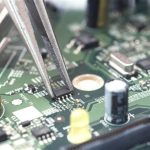
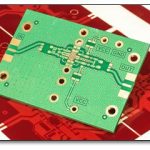
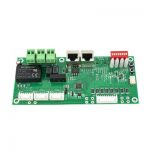
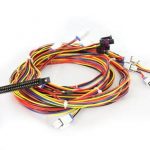
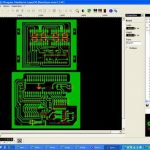
Leave a Reply